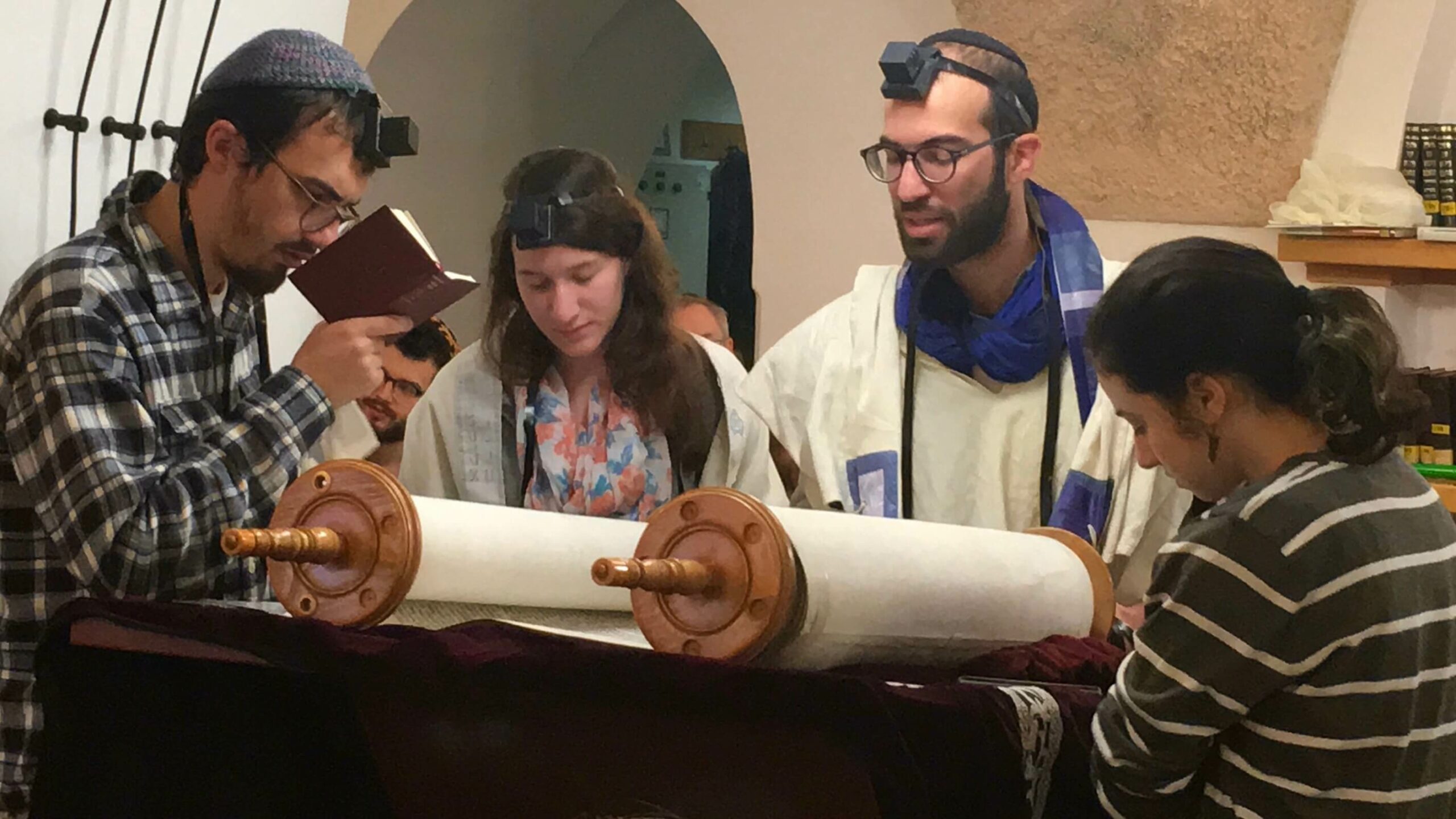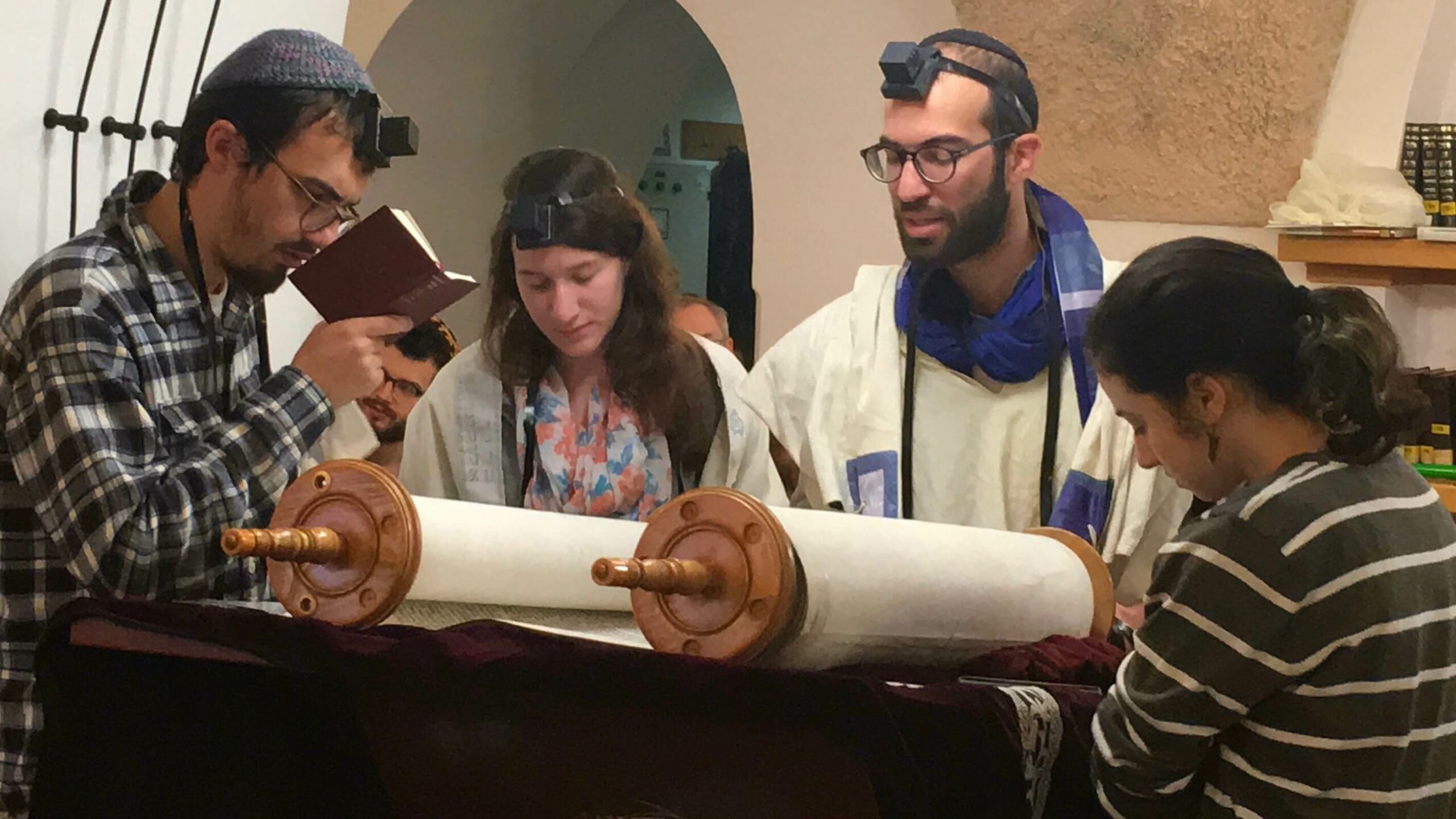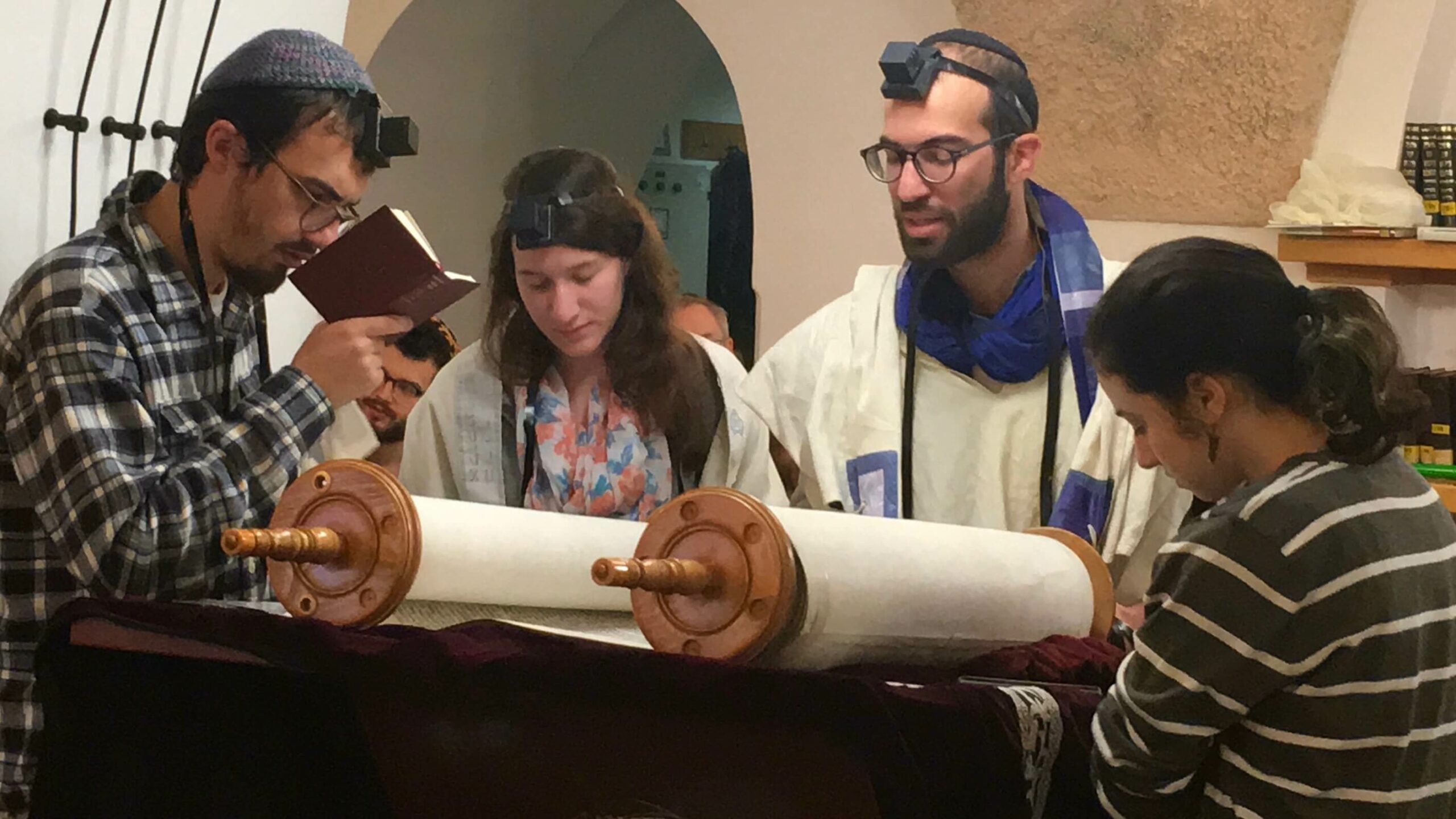

TORAH SPARKS (click here for print friendly version)
Parshat Tazria Metzora April 25, 2020 | Rosh Chodesh 1 Iyar 5780
Annual | (Lev. 12:1-15:33): Etz Hayim p. 649; Hertz p. 460
Triennial | (Lev. 14:33-15:33): Etz Hayim p. 663; Hertz p. 473
Haftarah | (2 Kings 7:3-20): Etz Hayim p. 675; Hertz p. 477
Disease as Punishment?
Rabbi Hillel Lavery-Yisraeli, taught at the Conservative Yeshiva from 2008 to 2011 and today is the rabbi of Beth Jacob Synagogue in Hamilton, Ontario.
Though Tzara’at (commonly misidentified as leprosy) resembles a medical condition, its diagnosis and cure belong in the religious realm and not the ‘secular’, medical one. True, much of the treatment seems medical: seclusion and cleansing, but it is a Kohen, not a physician, who diagnoses it, and it is a Kohen who pronounces the patient healed. Furthermore, one finds among its laws that the condition only becomes Tzara’at and thereby contagious when the Kohen pronounces it and onward, not retroactively. Upon arrival for a house inspection before they enter, the Kohen tells the occupants to remove all their furniture so that it will not become impure should the Kohen indeed declare Tzara’at. Furniture that was in the house with the still-undiagnosed Tzara’at is unaffected.
A Kohen cannot diagnose their own Tzara’at or that of their relatives (Mishna, Nega’im 2:5). If no qualified Kohen is available, Tzara’at will not exist since it only comes into being with the Kohen’s declaration. When the Torah’s mechanism for diagnosis and cure became unachievable with the cessation of the priestly sacrificial Temple service, Tzara’at disappeared from the world, hence its absence today.
Slander is usually assumed to be the cause of Tzara’at because the first two reported cases, Moshe’s and Miriam’s, happened after they slandered (Shemot 4:6, Bamidbar 12:10). Rabbi Yoḥanan is quoted in the Talmud (Sotah 15a) as saying seven transgressions cause it: slander, murder, unnecessarily swearing, licentiousness, arrogance, theft, and selfishness. Elsewhere (Berakhot 5b), he is quoted saying that Tzara’at can never be a ‘chastisement of love’ (undeserved suffering in this world, divinely inflicted to benefit the sufferer in the World to Come). The Gemara there questions this since a baraita terms Tzara’at an ‘atoning altar’; it tries to reconcile these statements so that sometimes Tzara’at can be a chastisement of love or at least not a punishment.
Miriam’s Tzara’at perplexed the Sages: The Talmud (Zevaḥim 102a) recounts how Aharon complained that Miriam was disadvantaged having no unrelated Kohen to pronounce her cured; Aharon and his sons were her brother and nephews. God reassured him, greatly honouring Miriam: ‘I myself am a Kohen, I will segregate her, I will declare her, and I will free her.’ But the Tosafot there point out a flaw: in the absence of a valid Kohen, Miriam had an advantage – no pronouncement means no Tzara’at to begin with! Miriam would merely wait for the symptoms to pass without requiring segregation or other actions to re-attain purity!
Given this, Rabbi Naftali Tzvi Yehudah Berlin (1816-1893) known by his initials as ‘the NeTzIV’, suggested a novel understanding of the Talmudic passage in Berakhot: Tzara’at can only be an ‘altar of atonement’ or ‘chastisement of love’ when the whole procedure can be performed – in the Land of Israel with a functional Temple. Otherwise, the symptoms are merely a mundane medical condition. The Netziv suggests that Aharon wanted her to receive the spiritual benefits of actual Tzara’at; without a valid Kohen, she would miss this opportunity. (Ha’amek Davar, Vayikra 13:2)
Extremist religious leaders love to proclaim that disasters are punishments for certain specific ‘transgressions’, usually ones which threaten male dominance and heteronormativity. Others often tell us to welcome pain as spiritually beneficial. From the above we conclude that these approaches are not consistent with Judaism. God may respond to transgressions with suffering, but sometimes God causes suffering non-punitively; we cannot decide which is which. Neither are we expected to willingly accept suffering as a Godly gift. Though not unheard of, tradition regards those loving chastisements as rare, occurring only in very specific, limited circumstances.
The Jewish response to disasters is well documented in the Torah, especially in our Parasha: Vigilance, self-protection, distancing from danger and preventing infection, while never forgetting to act with compassion towards all. And along with all that – praying.
D’var Haftarah: The World as God’s Mishkan
Rabbi Mordechai Silverstein, Conservative Yeshiva Faculty
It is commonly thought that the Sanctuary (Mishkan) and the Temple were human attempts to parallel God’s creation of the world. Just as God provided a home for His creatures, so, too, humans would provide a “home” on earth for their Creator. The strength of this imagery was so strong that we find the Temple described as if it was the world: “He built His Sanctuary like the heavens, like the earth that He established forever.” (Psalms 78:69)
In the haftarah for Shabbat-Rosh Hodesh Iyar, we find the opposite expressed, namely, that the world is God’s Temple and that, perhaps, there is no need for a temporal home for God: “Thus said the Lord: The heaven is My throne and the earth is My footstool: Where could you build a house for Me, what place could serve as My abode? All this was made by My hand, and thus it came into being, declared the Lord.” (66:1-2)
This idea, more than being simply poetic was actually quite controversial. Expressed at the time of the return from Babylonian exile, it seems to argue that there is no need to rebuild the Temple because God’s world already serves that purpose. Why would this prophetת speaking after the return from Babylonian exile, want to explode the beautiful idea that humans would want a dwelling place for God in their midst, a “house” built as an act of imitation of God’s having created the world?
The prophet understands the events of his day as having world changing consequences. The return from exile was for him like the creation of the world anew. And with this “new” creation came a change in priorities. It is not that this prophecy denies the significance of the Temple, rather the prophet wants to route God’s priorities and, as a consequence, the people’s energies, elsewhere: “But to this do I look, to the poor man and to the broken of spirit who trembles at My word” (66:2).
The prophet wants to remind us that God’s ultimate responsibilities are not to be found in majestic and august buildings but rather in caring for others, in benevolence, in bringing God’s love into the world. These are the kinds of things that make the world God’s “Temple” and this is where we should put our energies in these troubling times.
Quarantine, Isolation – Social Ramifications?
Vered Hollander-Goldfarb, Conservative Yeshiva Faculty
Text: Vayikra 13:2-8, 45-46
(2) “Should a person have on the skin of his body an affection or a rash… he shall be brought to… the priests. (3) And the priest shall see the affliction… when the priest sees it, he shall declare him impure. (4) If it is a white discoloration… which does not appear deeper than the skin…the priest shall quarantine the affected person for seven days… (8) And if the priest sees that the rash has spread on the skin, the priest shall declare him impure; it is Tzara’at. (45) And the person with Tzara’at, his cloths shall be rent, his head shall be disheveled, and his moustache he shall cover; and he shall call out “Impure! Impure!” (46) All the days that the affliction is upon him, he shall be impure. He shall dwell apart/alone, outside the camp shall his dwelling be.
- Do we have an indication of why a person is afflicted with Tzaraat, and what (if any) danger he poses to his environment?
- What is the role of the Kohen in the process of Tzaraat? Why a Kohen?
- While Tzaraat seems to be a physical ailment, how is it diagnosed? How is it cured? (Pay close attention – it’s a trick question.) How is it handled?
- Why do you think that the person with Tzaraat has to dwell outside the camp?
Commentary: Rashi Vayikra 13:4
Does not appear deeper – I do not know the meaning of this.
- This comment teaches us more about Rashi than about Tzara’at. What does it tell you about Rashi as a person/scholar/teacher?
Commentary Rashi Vayikra 13:45
And his moustache shall be covered – as one who mourns… And he shall call out “Impure! Impure!” – he must proclaim aloud that he is impure, so that people will keep away from him.
- Why might practices of mourning become part of the behavior of the person who is isolated because of Tzara’at?
- Who is responsible to make sure that the isolation of the person with Tzara’at is carried out? What is the message of making this person in charge of carrying out the isolation? By what means is it done?
- Tzara’at highlights some of the social and emotional issues that an ill person may experience, especially when placed in isolation. What might we take from this Parasha for our current experiences during the COVID-19 pandemic?








